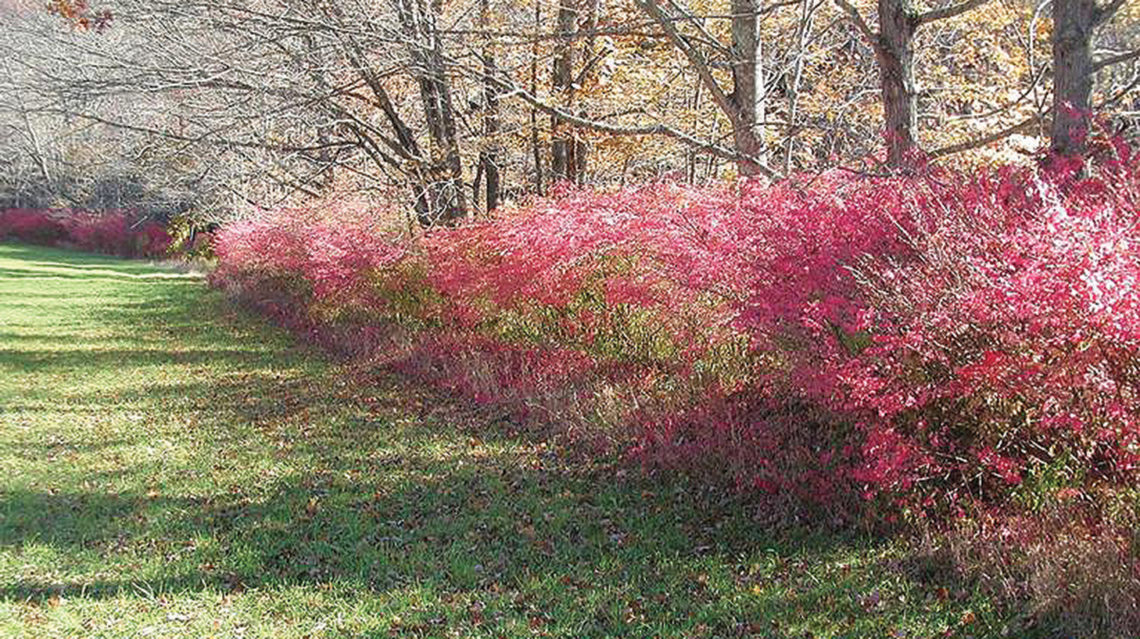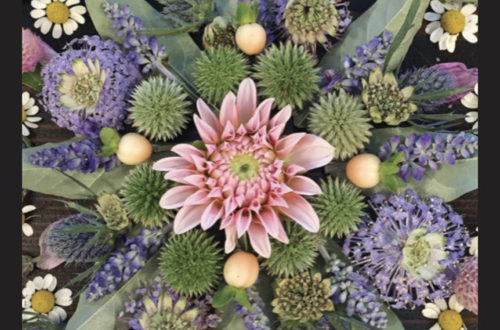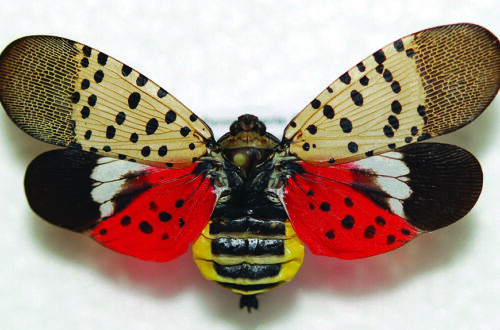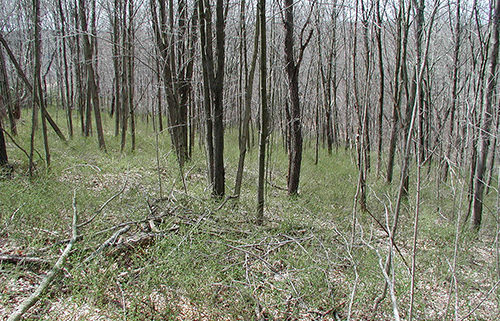MARCH-APRIL 2017 – Burning Bush or Winged Euonymus (Euonymus alatus) is yet another good-looking deciduous shrub that can be invasive if given the chance. When you look out into the forests of Connecticut in the fall and see an understory of red-leaved shrubs, they’re probably either burning bush or Japanese barberry (Berberis thunbergii).
Like Japanese barberry, burning bush is on the state’s invasive plant list but is not banned, presumably because there are some cultivars that are less aggressive.
Both plants are popular and, since they’re not banned, you’ve probably seen them installed in urban landscapes, most often in hedges and mass plantings.
Native to eastern Asia, burning bush has been here since the 1860s and has been widely used as an ornamental because its leaves turn a wonderful scarlet or purplish red in the fall. Hence the common name burning bush. As a result it’s been used in foundation plantings and as a hedge. It’s also routinely planted in commercial settings and along highways.
So, what’s the problem? Burning bush often escapes cultivation and takes over in forests and fields, displacing native shrubs and plants. When it forms dense thickets, the combination of shade and a dense mat of roots makes it difficult for other plants to survive.
It’s a prolific seed producer and the seeds are distributed by birds in their droppings. Dozens of seedlings and root suckers can be found under parent plants.
It’s adaptable to different soil and light conditions and has no major pest problems.
Identification
Burning bush is a deciduous shrub with multiple stems that reaches a height of 6-10 feet but can reach 15 feet or more. Its has 1-3 inch long, finely toothed elliptical leaves arranged oppositely in pairs, as are the branches.
Inconspicuous greenish-yellow four-petaled flowers appear in the late spring.
The leaves turn bright red or pink/red in the fall.
A distinguishing feature are the four corky wing-like ridges arranged around young stems. These wings gave the shrub its other common name … winged euonymus.
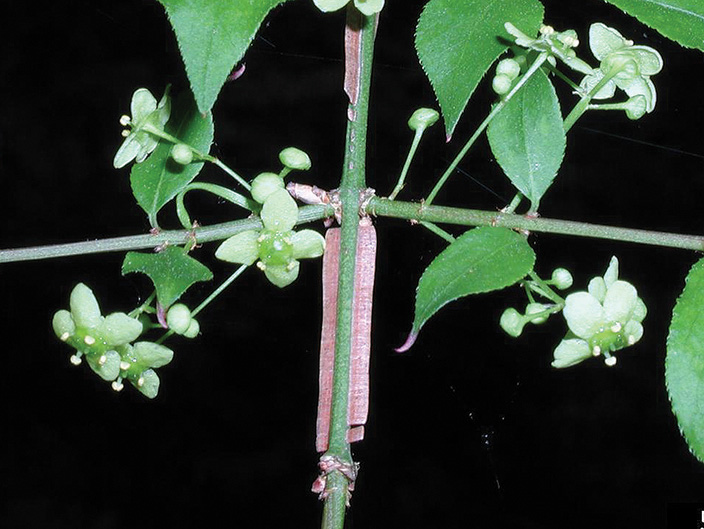
The fruit is held in a group of pods (normally four). When ripe, the purple fruits split open and expose the bright red-orange seeds.
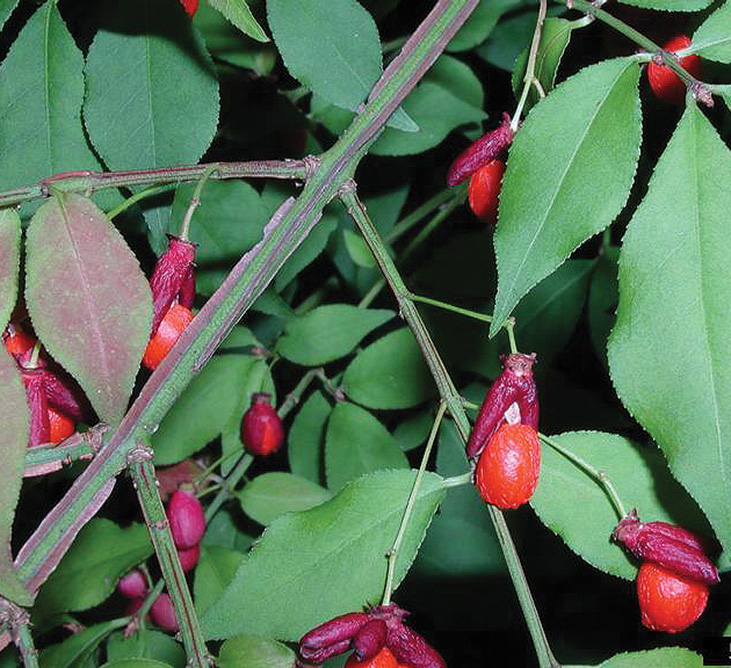
Management
Hand-pulling of saplings can be effective as can repeated cutting or mowing. Painting cut stumps with a herbicide also works. Older plants may require the use of tools or heavy equipment. You can cut the them off near the ground and then remove the root system. Cutting off all of the flowers will eliminate seed production.
Look-alikes
Saplings of the native sweet gum (Liquidambar styraciflua) can have corky wings but usually two, not four.
Burning bush can also resemble some species of blueberry (Vaccinium spp.) but blueberry leaves are alternate (offset).
Disposal
If the plant has flowers or seeds, cut them off and bag them.
Alternatives
• American cranberrybush or highbush cranberry (Viburnum opulus var. americanum formerly Viburnum trilobum) for berries
• Bayberry (Myrica pensylvanica) for modest burgundy color and berries
• Highbush blueberry (Vaccinium corymbosum) for berries and fall color
• Red chokeberry (Aronia arbutifolia) for berries and fall color
• Winterberry (Ilex verticillata) for berries
• Red twig dogwood (Cornus sericea) for winter interest.
Go to cipwg.uconn.edu for more info.
– Will Rowlands
